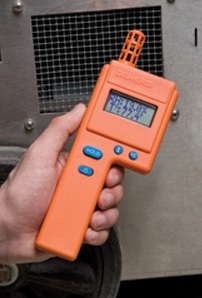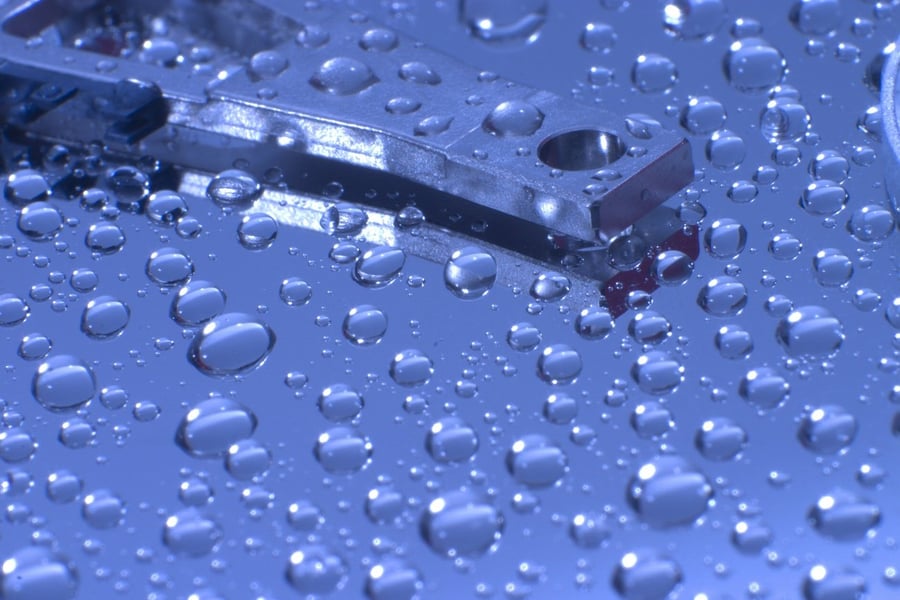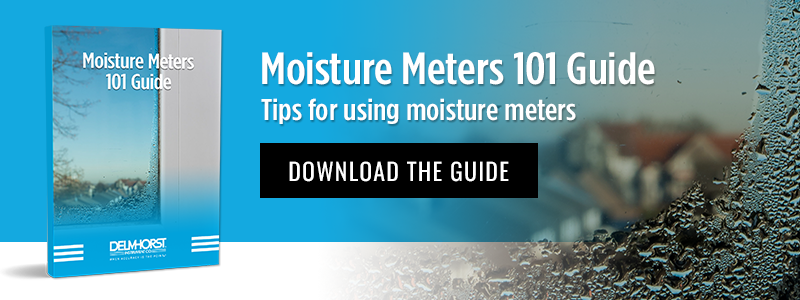Ensuring Accurate Readings in Relative Humidity Meters

Thermo-hygrometers, otherwise known as RH meters because they measure the relative humidity of a given area, are an important tool for flooring contractors, restoration specialists, and many other professionals. While the function of these devices is related to moisture, they are not considered moisture meters because they are not used to measure a specific material such as wood.
These devices use a built-in sensor to get a reading of the temperature and relative humidity in the air when they are activated. The exact composition of the sensor element is not standardized from one manufacturer to the next, as different manufacturers will use different materials for their sensors and will even calibrate them to different standards.
For flooring contractors in particular, thermo-hygrometers are an important tool for adhering to the ASTM-F-2170-11 standard. Under this standard, you need to have an RH meter and in-situ probes to measure the humidity conditions deep inside of a concrete slab to accurately assess whether or not the slab is ready to be built upon.
Because of this, it is important to make sure that you have readings that are as accurate as possible.
Sources of Inaccurate RH Meter Readings
There are a number of things that can affect the accuracy of a reading from an RH sensor, including:
-
Sensor Tolerance. Even the best RH meters on the planet have a certain margin of error. Known as sensor tolerance, this built in possibility of error is unavoidable, particularly when taking a reading in a particularly large area. For example, if a thermo-hygrometer has a sensor tolerance of +/- 3%, then a room with an actual relative humidity of 52% might read as having 49% or 55% RH. The best way to overcome sensor tolerance is to take numerous readings in an area and average the results. Assuming all readings fall within the standard sensor tolerance for your RH meter, the final result should be reliable.
-
Contaminants on/Damage to the Sensor Material. Over time, deposits of foreign substances will settle on the sensor element of the thermo-hygrometer. As these contaminants accumulate, the accuracy of the hygrometer will be affected, resulting in “sensor drift” as the sensor slips further out of calibration. Sometimes, when the meter is left in a caustic environment, more harmful chemicals may settle on the sensor element, causing damage even faster. When a sensor is damaged in such a fashion, do not attempt to repair it or clean it off. Instead, replace the sensor with a new one if it is removable, or send it in to your manufacturer for repair if not.
-
Low Batteries. To operate efficiently, a thermo-hygrometer needs to have a steady supply of electricity throughout the reading process. If there isn’t enough charge in the meters batteries, your reading results will not be as reliable, if the meter is able to work at all. Thankfully, fixing a low battery problem is as simple as taking the old battery out and putting in a new one.
When sensor drift gets to be too severe, the only real fix is to replace the sensor element. This can mean either sending the hygrometer back to the manufacturer if the sensor element is permanently mounted to the unit, or ordering a replacement sensor if it is removable. One piece of advice we have is to never open the casing of your thermo-hygrometer when trying to fix it, as this can void your manufacturer warranty (assuming your hygrometer is still under warranty).
Checking Thermo-Hygrometer Accuracy
 To check the calibration of a hygrometer in the field, you can compare the readings of your everyday use hygrometer against a second, reference sensor. To get the best comparison results, there are a few simple tips you can follow from our whitepaper on Relative Humidity Sensor Behavior and Care:
To check the calibration of a hygrometer in the field, you can compare the readings of your everyday use hygrometer against a second, reference sensor. To get the best comparison results, there are a few simple tips you can follow from our whitepaper on Relative Humidity Sensor Behavior and Care:
-
Location and Stabilization. When comparing the values of two sensors, they should be placed as close to one another as possible to help ensure that they are exposed to similar conditions. Even a short distance can mean a significant difference in the ambient moisture conditions that the meters are exposed to. Furthermore, the RH conditions should be given time to stabilize before you start to take readings for comparison.
-
Keep Sensor Tolerance in Mind. When comparing sensor readings, keep in mind the sensor tolerance of each hygrometer. To be sure that each meter is calibrated to the same standard, make sure to use two meters of the same model made by the same manufacturer. This way, you’ll know that the sensor tolerance of each meter is comparable.
Caring for a Thermo-Hygrometer
While every thermo-hygrometer will eventually lose calibration over time as it is used (which inevitably results in exposure to contaminants), there are ways that you can reduce the severity of sensor drift and prolong the useful life of the meter. To help you get the longest useful life out of your meter, here are a few tips you can use:
-
Use a Protective Coating/Membrane over the Sensor. Placing a thin membrane or protective coating over the sensor can help to filter out harmful contaminants, prolonging the useful life of the sensor compared to an unprotected sensor.
-
Proper Storage. When a thermo-hygrometer is not in use, it should be securely stored in a sealed, clean container where it will not be exposed to open air. This will help to limit the sensor element’s exposure to foreign contaminants in between uses. Also, the sensor should not be exposed to extreme temperatures.
-
Avoid Leaving the Meter in High Humidity. Although designed to measure ambient humidity conditions in a given area, a thermo-hygrometer should not be left in an extremely humid environment for prolonged periods of time.
To learn more about thermo-hygrometers and other important moisture testing tools, contact Delmhorst today, or check out our moisture meters 101 guide using the link below:
Subscribe to Our Blog
Post Related

Using Relative Humidity Sensors in Restoration Work


